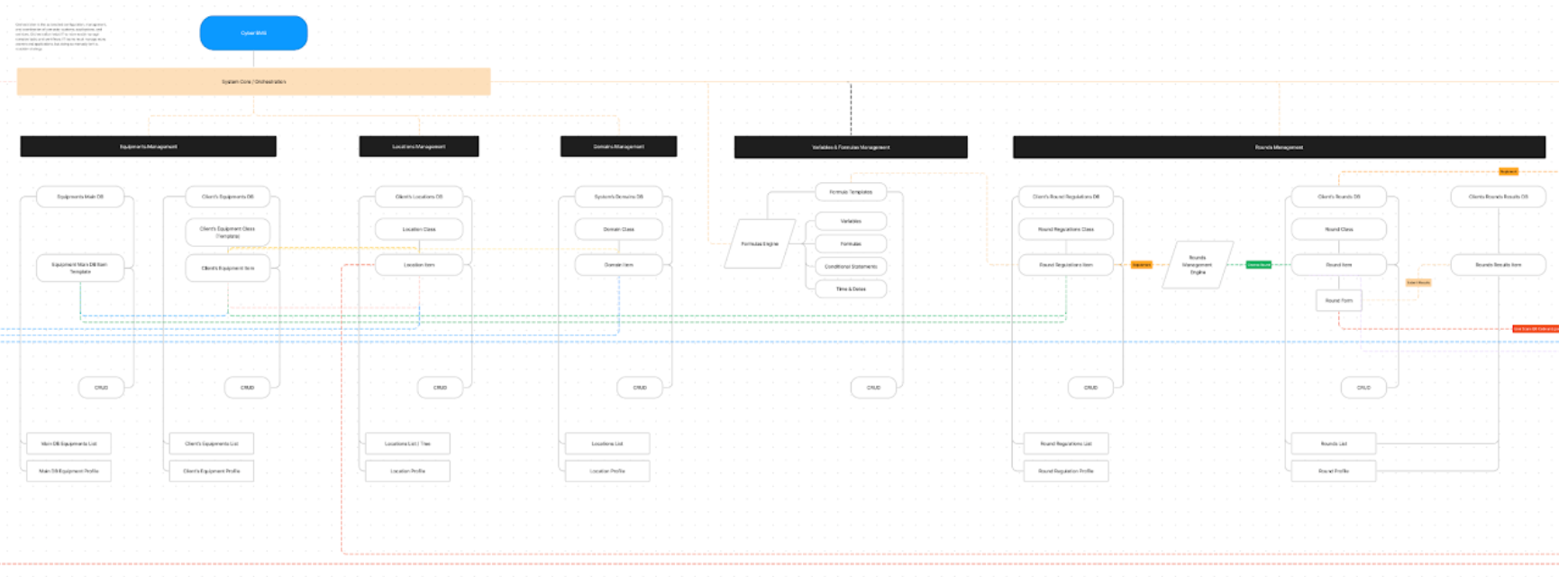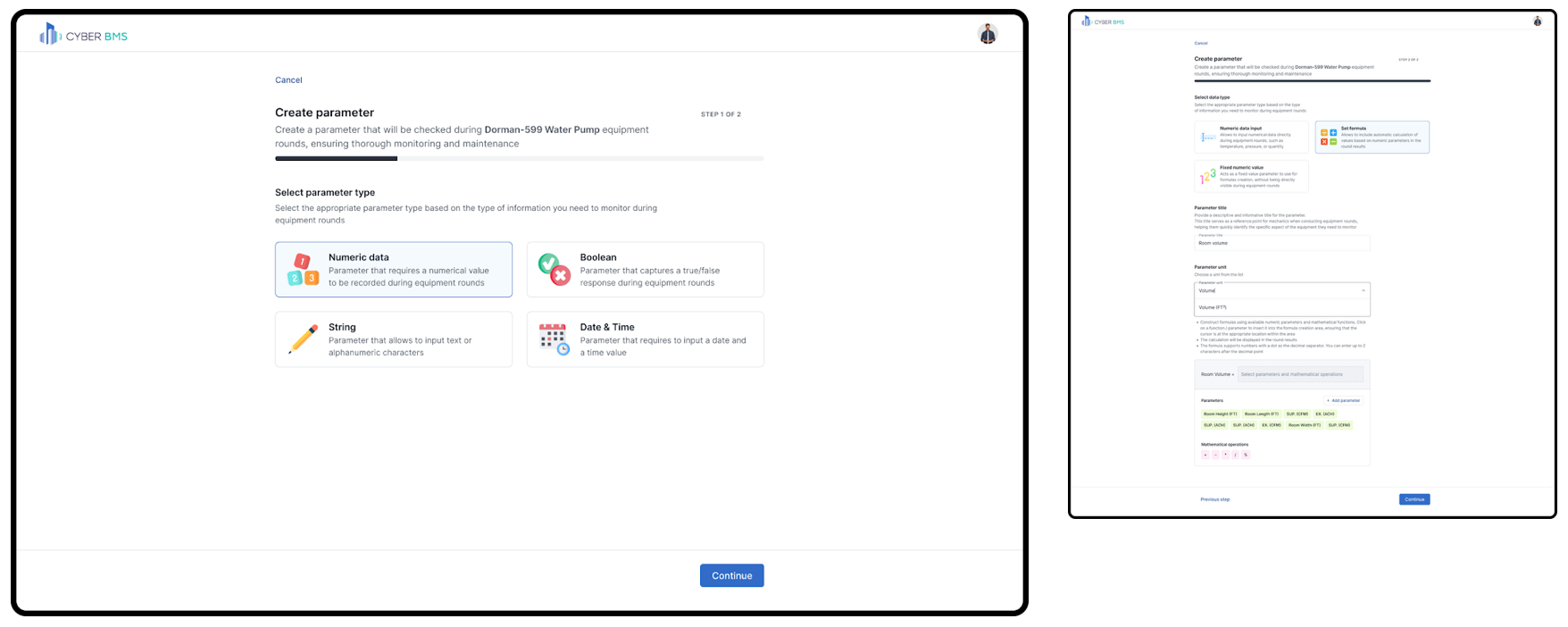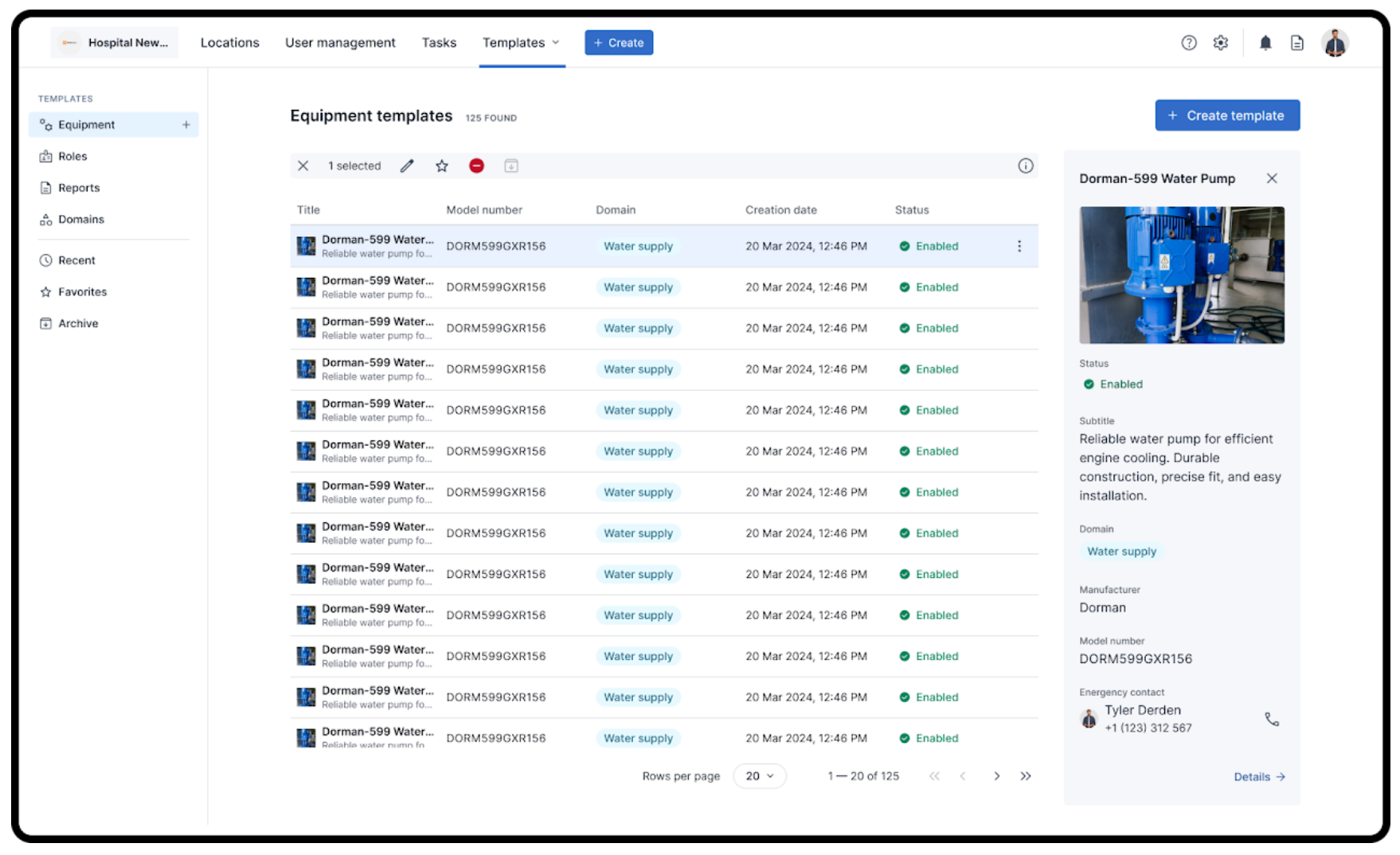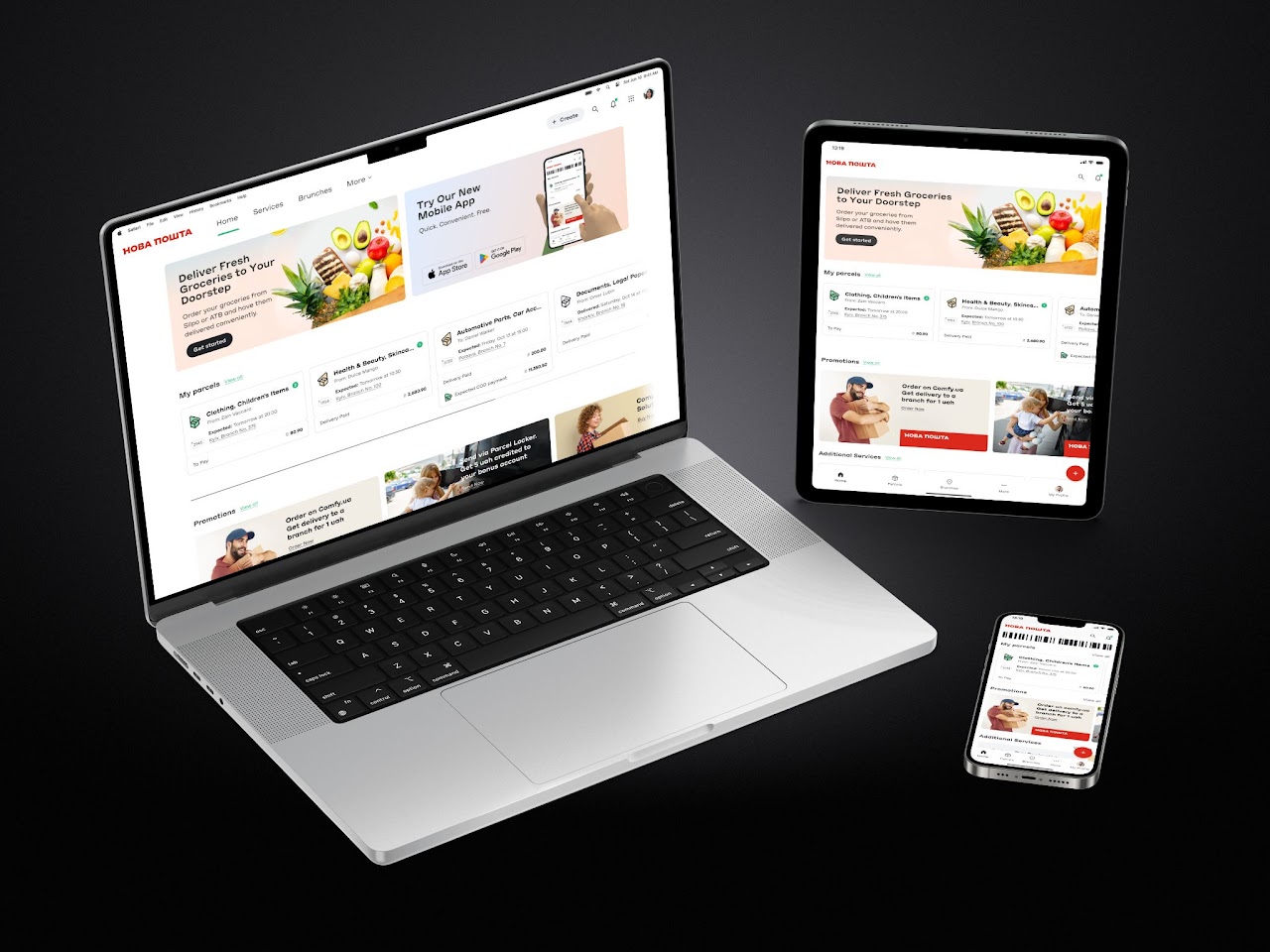The table of content
Cyber BMS needed more than just a software upgrade — they needed a flexible, user-focused platform that could grow with them. The goal? Build a scalable business management system that would simplify complex infrastructure processes, automate routine tasks, and support the company’s expansion into new regions — all without overwhelming users.
From universities and hospitals to public and government institutions, their clients rely on stability, efficiency, and clarity. That’s exactly what we set out to deliver.
Project Overview
Together, this cross-functional team tackled the challenge of modernizing critical infrastructure operations — making them smarter, simpler, and more future-ready.
Problem Statement
As Cyber BMS rapidly expanded across the US, their existing system — built on Moday CRM — started showing serious cracks. It wasn’t designed to scale, offered very limited flexibility for customization, and was just plain difficult for users to navigate. Adoption rates were low, and internal teams struggled to get the most out of the tool.
To make matters worse, the system couldn’t support the company’s broader growth strategy, including plans to enter new markets like Canada and Mexico. Cyber BMS needed a fresh, scalable solution — one that was intuitive, efficient, and adaptable enough to keep up with evolving client needs while cleaning up operational bottlenecks along the way.
Challenges We Had to Solve
Scalability
The legacy system simply couldn’t keep up. As Cyber BMS added more clients and looked to expand into new regions, the tech couldn’t scale to meet the demand.
Complexity
The user interface was clunky and confusing. It required constant hand-holding and support — and even then, errors were common. For a growing company, that’s a big red flag.
Lack of Automation
Too many tasks were manual, repetitive, and time-consuming. Cyber BMS needed smarter workflows that could free up both management and frontline staff.
User Diversity
From engineers to facility workers, the user base was broad. The new system had to be intuitive enough for non-tech users, but still powerful for experts — a tough balance to strike.
Process Overview
Stage 1: Discovery
Before jumping into design, we got our hands dirty understanding the real needs of Cyber BMS.
- We ran deep-dive workshops and interviews with stakeholders to surface core pain points and clarify business priorities.
- Market data and competitive insights helped us pinpoint exactly where the old system fell short — and where we could innovate.
- From there, we mapped out a design strategy grounded in automation, scalability, and user-first principles.
Stage 2: Design
Once we had clarity, it was time to build a system that made sense — and could scale.
- We designed a modular architecture that’s easy to maintain and built to grow.
- Low-fidelity prototypes allowed us to test early and often. Every decision was shaped by real feedback from stakeholders.
- By using a sprint-based, iterative workflow, we stayed aligned with business goals while keeping the door open for continuous improvement.

Stage 3: Implementation
With the foundation in place, we moved into action — working side-by-side with the development team to bring the vision to life.
- We rolled out essential system modules like User Management, Equipment Management, Task Manager, and a smart Notification System — all designed to work seamlessly together.
- To boost productivity, we introduced smart features like Equipment Templates and Automated Task Flows, helping teams handle repetitive work with less manual input.
- We also led the development of a mobile app tailored for on-site service teams — giving them everything they need to work efficiently in the field.
Modular Architecture
The Challenge
Cyber BMS needed a system flexible enough to adapt to various client needs, yet scalable enough to support rapid growth across new regions. The legacy monolith made updates slow, customization difficult, and expansion expensive.
Our Solution
We implemented a modular architecture that broke the system into independent, configurable components. This allowed different teams and clients to use only what they needed — and made adding or updating features much easier. The architecture was co-designed with the system architect to ensure technical robustness without sacrificing usability.
The Impact
- Faster rollout of new features across client environments
- Minimal overhead for regional expansion
- Tailored experiences based on user roles and organization types


Equipment Templates
The Challenge
Onboarding new equipment across client sites was slow and error-prone. Each setup required manual data entry, taking up to 20 minutes per unit and leaving plenty of room for inconsistency.
Our Solution
We introduced standardized equipment templates — pre-configured forms for common equipment types. These templates automated much of the setup process and ensured consistency, no matter the client or location.
The Impact
- Setup time dropped from 20 minutes to just 2 minutes per unit
- Data accuracy improved, reducing errors and rework
- Faster onboarding, leading to quicker project launches and happier clients



Automated Task Manager
The Challenge
Manual task assignment was slowing everything down. Service teams lacked an efficient way to prioritize jobs, optimize routes, or respond quickly to urgent maintenance needs — resulting in wasted time and delayed fixes.
Our Solution
We built an Automated Task Manager that dynamically assigns tasks based on urgency, location, and workload. It also optimizes inspection routes to keep service operations running like clockwork.
The Impact
- 35% boost in productivity for service staff
- +50% increase in daily task completion, from 12 to 18 tasks per person
- Faster response times for critical issues, improving reliability across the board
Real-Time Dashboards
The Challenge
Users across different roles needed quick access to relevant data, but the old system made it hard to surface insights without digging. This slowed decision-making and increased the risk of critical mistakes.
Our Solution
We developed customizable real-time dashboards tailored to each user type — from technicians to managers. With instant access to the right data, users could act faster and with greater confidence.
The Impact
- Improved decisions, powered by real-time insights
- 30% fewer critical errors, thanks to clearer, role-specific data views
- 92% user satisfaction, with dashboards rated as "highly effective"

Notification System
The Challenge
In critical infrastructure environments, slow response to equipment issues can lead to costly downtime and operational chaos. Cyber BMS needed a reliable way to notify the right people — fast.
Our Solution
We implemented a configurable Notification System that pushes instant alerts across multiple channels. This ensured critical events were communicated in real-time, minimizing delays and keeping operations running smoothly.
The Impact
- 25% reduction in downtime thanks to faster incident response
- $1.2M+ in annual savings, from improved reliability and reduced maintenance costs
- Smoother coordination across teams, leading to more efficient day-to-day operations
Results
Productivity Boost
The introduction of automated task management and mobile applications led to a 55% increase in service staff efficiency. The number of completed tasks per day rose from 10 to 18, while time spent on routine inspections was significantly reduced.
Scalable Growth
The modular architecture enabled Cyber BMS to expand into new regions within three months of pilot launch. The system now supports a 20% larger client base without requiring additional technical resources.
Higher User Satisfaction
According to post-launch surveys, 92% of users reported improved ease of use and satisfaction — a substantial jump from the 57% rating of the previous system.
Fewer Errors, Lower Costs
Custom dashboards and real-time notifications helped reduce critical equipment failures by 30%, resulting in estimated annual savings of $1.2 million across client sites.
Faster Training and Onboarding
A more intuitive system interface cut new staff training time in half — from 8 hours to just 4 — allowing teams to deploy and ramp up significantly faster.













.avif)




















































.png)
.png)
